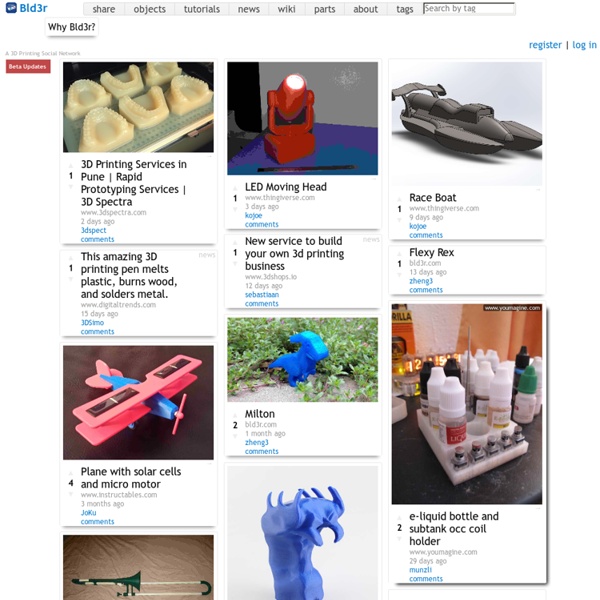



Cubehero: Work and collaborate on 3D printed projects Thingiverse - Digital Designs for Physical Objects About Us - MyMiniFactory.com MyMiniFactory.com is a free library of 3D printable, beautiful and useful objects. The first version of MyMiniFactory was launched on the 18th June 2013. It is the result of many months of hard work by a professional team of experienced 3D designers. Our large range of downloadable 3D printable objects will satisfy the growing number of 3D printer owners. Each object is original and unique. They have all been test printed by our team of 3D Printing Gurus on affordable 3D printers.
RepRap - RepRapWiki Wevolver Electronics Design, Accelerated. - Upverter All projects Hack a Day All Projects Select a tag Most skulled Official Hackaday Prize Entry 53.5k 73 1.1k 675 An affordable electronics manufacturing system for hobbyists, students, & small businesses. Project Owner Contributor $300 Pick and Place / 3D printer by Neil Jansen 37.7k 124 818 593 Python-powered machine vision modules OpenMV by i.abdalkader 58.5k 31 1.1k 472 pcb mill built from garbage using basic hand tools and little money PCB mill for under $10 by shlonkin 47.5k 167 816 463 Fully stand-alone HF (Shortwave) Software Defined Transceiver & Vector Network Analyzer. PortableSDR by Michael R Colton 29.9k 28 828 415 Intelligent home automation hardware and software on a budget which utilizes a full home personal digital assistant and electricity savings Project Jarvis - A.I Home Automation & Assistant by IamTeknik 34.8k 68 505 372 Science in your hand. Open Source Science Tricorder by peter jansen 18.5k 80 456 357 LoFi is a very low cost ($5), small, auto-transmitting module. LoFi by David Cook 38.6k 32 566 353 by nsted